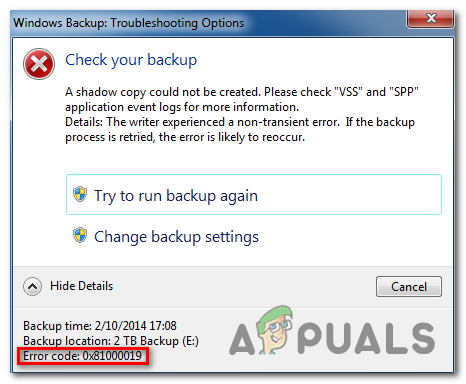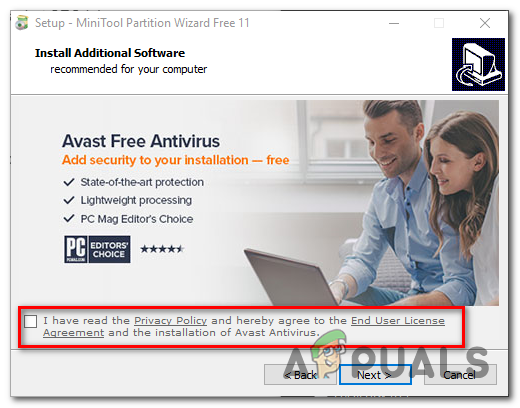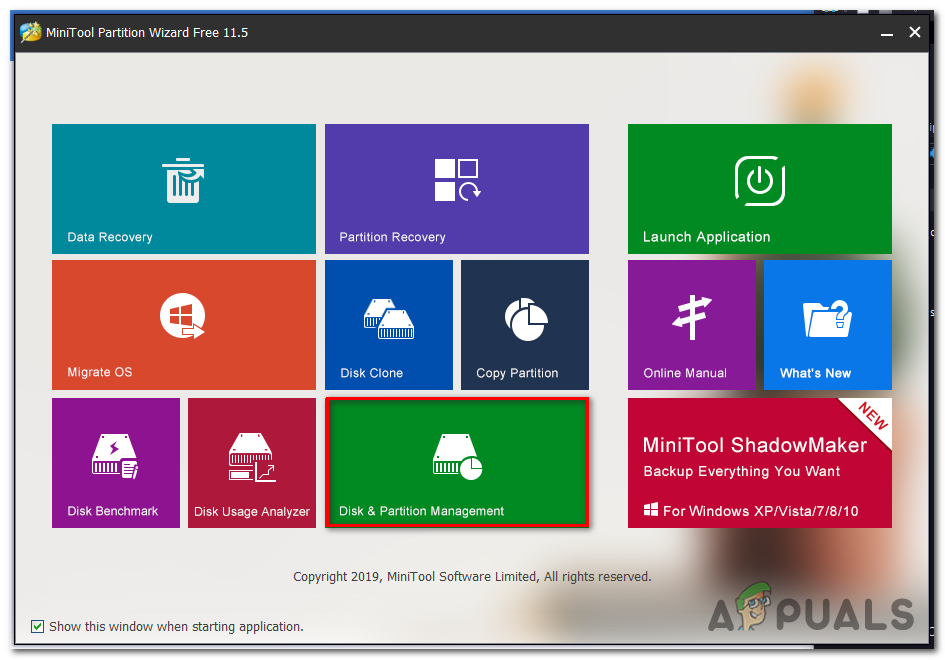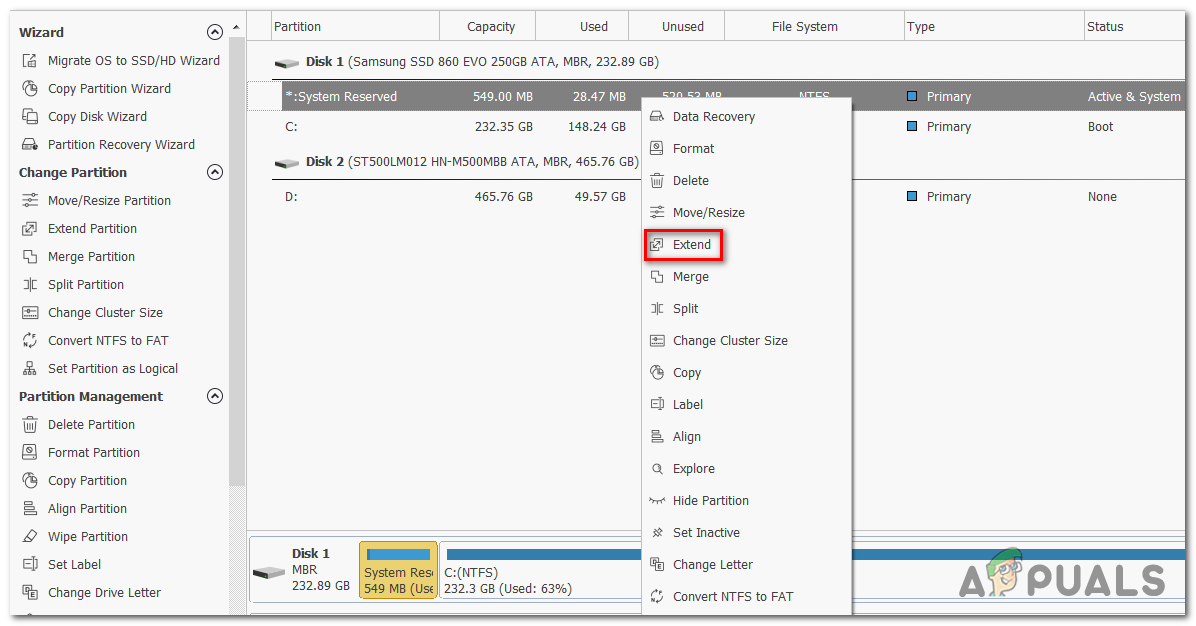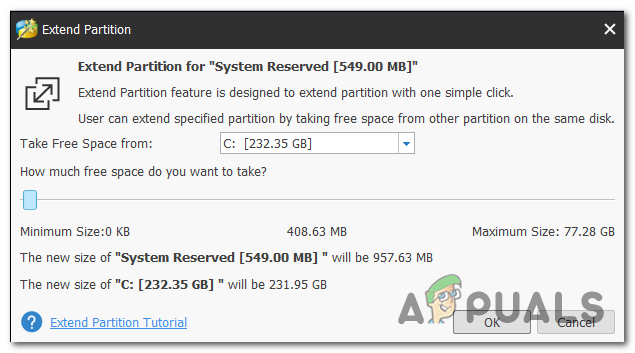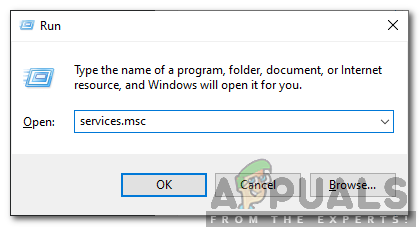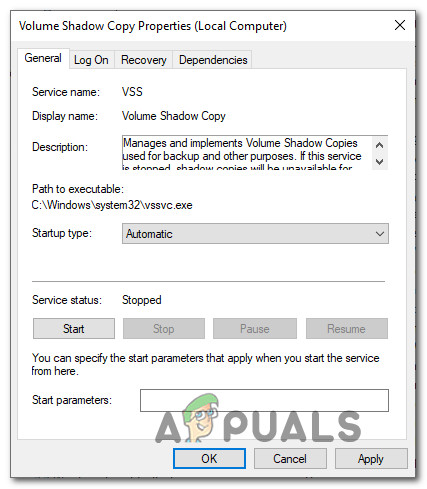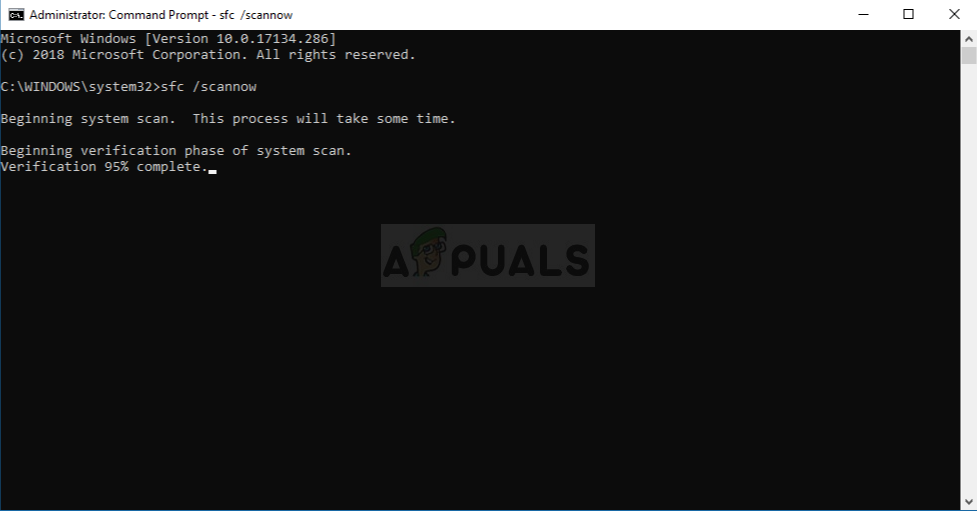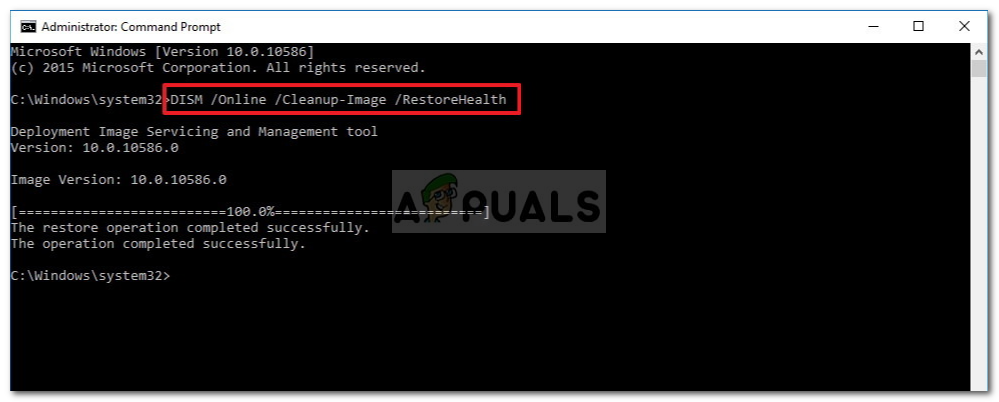What’s causing the Windows Backup Error 0x81000019?
We’ve investigated this particular issue by looking at various user reports and by trying out the most popular repair strategies that other affected users have successfully used to get to the bottom of this issue. As it turns out, several different scenarios might end up producing this issue. Here’s a shortlist of potential culprits: If you’re currently encountering the same issue and you’re looking for a way around it, the steps below should eventually allow you to fix the 0x81000019 error code for good. Keep in mind that each of the potential fixes mentioned below is confirmed to work by at least one affected user. If you want to be as efficient as possible, we encourage you to follow the instructions below in the same order that we arranged them in (via efficiency and severity). Eventually, you will stumble upon a fix that will allow you to resolve the issue regardless of the culprit that’s causing the problem. Let’s begin!
Method 1: Enlarging the system reserved partition
As several affected users have reported, you’re likely encountering this problem due to an insufficient system partition space. During the backup procedure, Windows will swipe a lot of data back and forth the system reserved partition. If not enough space is available, expect to see the 0x81000019 error code as a result. Some users have confirmed that they were able to resolve this issue by using a 3rd party application to enlarge the system reserved partition to over 500 MB by taking space from C or a different regular drive. If you think this scenario is applicable, follow the instructions below for step-by-step instructions on enlarging the system reserved partition by using Partition Wizard: Note: We’re using the free version of Partition Wizard, but feel free to use any other product that’s capable of doing this, if you’re more comfortable with it. If you’re still encountering the 0x81000019 error code, move down to the next method below.
Method 2: Setting the Volume Shadow Copy Service to AUTOMATIC
Another potential cause with the potential of triggering the 0x81000019 error code is an improper instance of the Volume Shadow Copy service (commonly referred to as the VSS service). In most cases, the backup procedure will not be able to complete because the VSS service is set to Manual. Several affected users that were also struggling to resolve this problem have reported that they finally manage to resolve the issue by changing the status type of Volume Shadow Copy to Automatic. Most users have reported that after doing this, they were able to complete the backup procedure without encountering the 0x81000019 error code. Here’s a quick guide on modifying the status type of Volume Shadow Copy Service to Automatic: If you’re still encountering the same 0x81000019 error code when trying to repeat the action, move down to the next method below.
Method 3: Disable 3rd party AV suite (if applicable)
As it turns out, in some cases, the decisive factor that’s causing the backup procedure to fail with the 0x81000019 error code is an overprotective 3rd party security suite. Keep in mind that certain 3rd party security suites are known to interfere with some Windows components including the Backup component. Avast, Comodo, McAfee are just a few potential culprits that might be responsible for the apparition of the 0x81000019 error code. Several affected users that found themselves in this exact position have managed to get the problem sorted out either by disabling the real-time protection while the backup was being created or by uninstalling the intrusive security suite altogether. If you want the less intrusive approach, you should start by accessing your AV settings and disabling real-time protection first. Chances are it will let you complete the backup process without getting the error again (unless a firewall component is also involved). With most 3rd party suites, you can do this easily by right-clicking the taskbar icon to access the quick menu. If the same problem is still occurring even after you disabled the real-time protection, we encourage you to uninstall the 3rd party suite completely from your computer – just to make sure that your AV hasn’t enforced some passive security rules that will remain active even when the real-time protection is disabled. If you’re looking for a quick and effective way of doing this, follow this article (here) for step by step instructions on getting rid of your 3rd party AV and removing every remnant file. If you already followed this method to no success or this wasn’t applicable since you don’t use a 3rd party AV suite, move down to the next potential fix below.
Method 4: Running DISM and SFC scans
As it turns out, this particular problem can also appear due to some kind of system file corruption. This has been consistently reported by several different Windows 10 users that have been hinting that the backup component can be inhibited by corrupted data present in critical folders. If this scenario is applicable, you should be able to fix the problem by running ac couple of built-in utilities designed to deal with instances where system file corruption ends up breaking important components. DISM (Deployment Image Servicing and Management) and SFC (System File Checker). While SFC is more focused on repairing logical errors, DISM is better at fixing dependencies that might affect the backup and updating operation. With this in mind, we encourage you to run both utilities to maximize your chances of getting the backup component back to a functioning state. Here’s a quick guide on running both the SFC and DISM scans from an elevated Command Prompt: If the same 0x81000019 error code is still occurring, move down to the next method below.
Method 5: Perform a repair install / clean install
If the general system repair that you performed above didn’t allow you to resolve the issue, it’s very likely that you’re dealing with some kind of system file corruption that cannot be resolved conventionally. In case this scenario applies to your current situation, you should be able to fix the issue entirely by resetting every Windows component including booting-related data. When it comes to doing this, you have two ways forward:
Clean install – This is the easiest procedure out of the two since it can be done I just a couple of steps with no installation media. But the major disadvantage is that you will end up losing all your personal files unless you back up all important files in advance and store them outside your OS drive.Repair install – A repair install (in-place repair) is the more tedious approach that will require you to use a compatible installation media. But the major advantage of going this route is that it will only affect your Windows components. This means that every personal file (apps, games, media, and even some user preferences) will remain intact.
Feel free to follow whichever method is closer to what you have in mind.
How to Fix Error Code Netflix Error Code TVQ-ST-131FIX: Windows Defender Error The service couldn’t be started Error code:…How to Fix Windows Update “Error Code: Error 0x800706ba”?How to Fix ‘The Software For This Device Has Been Blocked From Starting Because…
